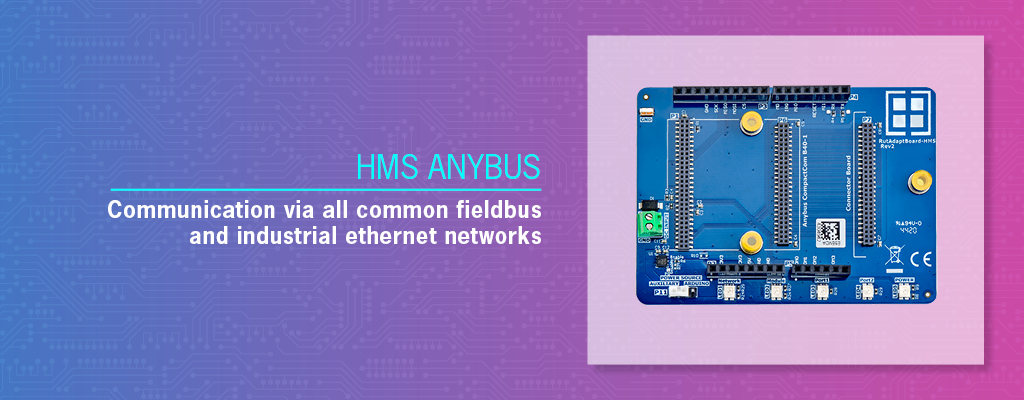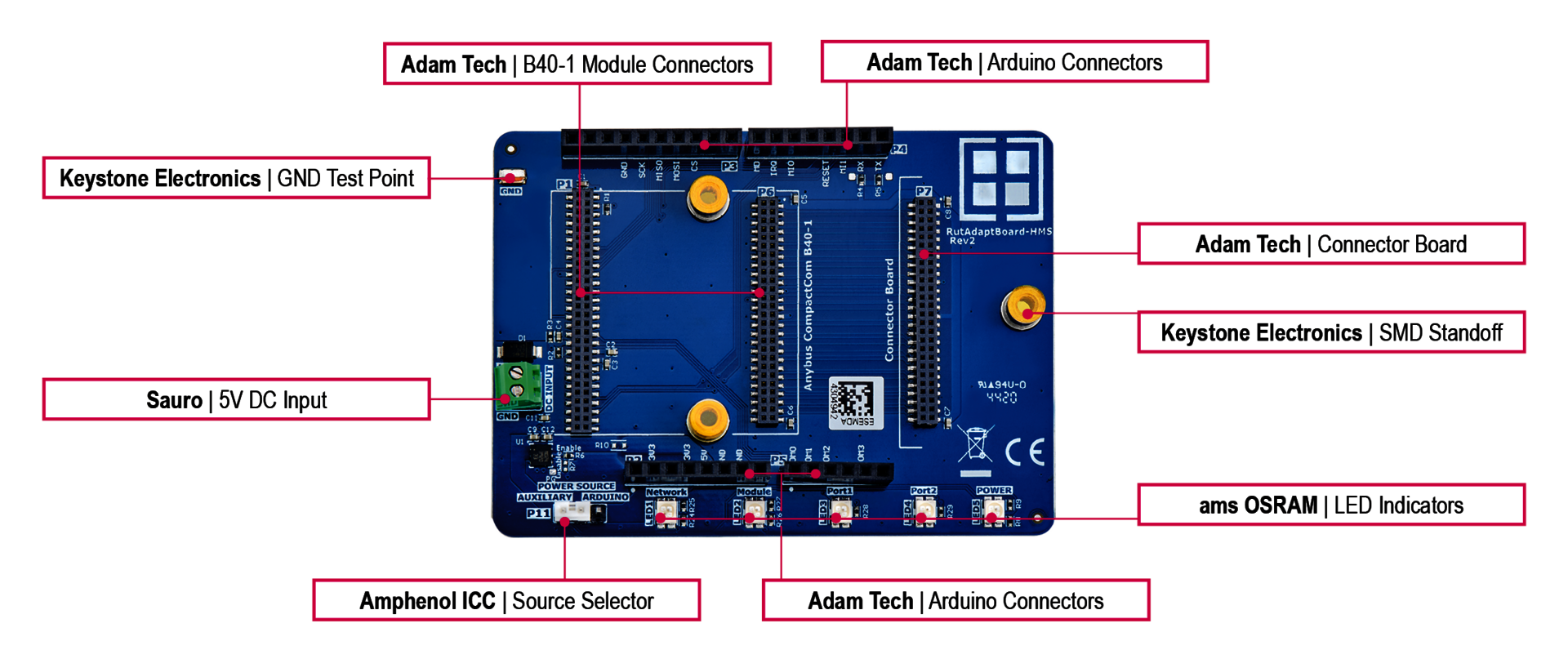Rutronik Adapter Board – HMS Anybus
The Number One Choice for Multi-Network Connectivity
As a manufacturer of industrial devices, you need to make sure that your products can communicate with the many fieldbuses and industrial Ethernet networks that exist on the automation market today, as well as emerging technologies used in Industrial IoT applications. But developing and maintaining connectivity for all these networks and standards is both time-consuming and resource-demanding. By using HMS Anybus you will be able to connect to all major industrial networks on the international market.
HMS Anybus Makes Your Product IIoT-Ready and Secure
Offering connectivity over IoT-related communication standards such as OPC UA and MQTT and IT functions such as integrated web pages, FTP, email and socket interface access prepares your application perfectly for the IIoT area. HMS Anybus users benefit also from the most trusted solution on the market including built-in security features such as packet storm resistance, certificates, access control and more.
Rutronik Solutions Level 3 – Advanced Design Level
Get Ready for the Future
Most networks specifications are updated 1-2 times per year. With Anybus, you don’t need to worry about this. You get free software updates whenever networks are revised. With HMS Anybus you get Connectivity to all major fieldbuses and Industrial Ethernet networks and IoT standards, opening up new markets and revenue for your product. This leads you to shorter time to market and a future-proof solution. Avoid worrying about new networks, IIoT, network upgrades, maintenance and conformance issues.
Contact




